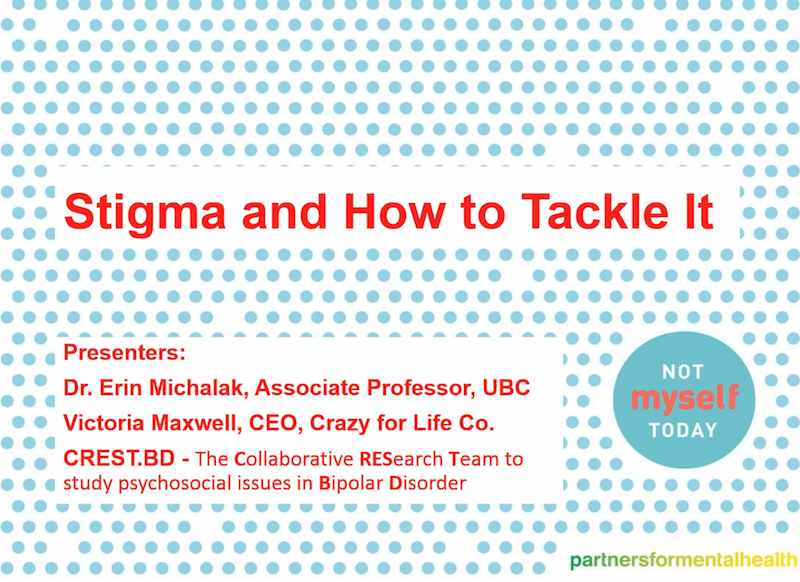In this webinar, UBC Associate Professor of Psychiatry and co-founder of CREST.BD, Dr. Erin Michalak, and actress and mental health educator, Victoria Maxwell, share their insights into workforce stigma and how to tackle it. View this webinar by clicking here.
Many people in the Canadian workforce will experience a mental health challenge at some point, often resulting in absenteeism, reduced productivity, and increased turnover. It is common for mental health challenges to go unreported, and few Canadians feel comfortable discussing a mental health issue with their employer. Amongst other deterrents, what dissuades open discussions of mental illness in the workplace most is stigma.
One way to look at stigma is as defining it as a mark of shame, and those affected by stigma may be subjected to discrimination and prejudice. Stigma is one of the primary reasons mental illness is treated differently from physical illness. Research indicates that stigma occurs on three different levels: self-stigma, social stigma, and structural stigma. Often, an individual will experience all three levels of stigma over the course of their illness and recovery.
Successfully coping with stigma in the workplace requires overcoming internalized stigma (or self-stigma), exercising judicious disclosure of a mental health condition to co-workers and employers, and building a sense of identity separate from one’s diagnosis. For individuals living with a mental health condition, coping with stigma effectively often leads to success in the workplace.
Education is key to tackling stigma in the workforce. Understanding what mental health conditions are and what they are not, sharing this knowledge, and raising mental health awareness, is crucial when promoting a stigma-free work environment. When addressing mental health concerns in the workplace, it is important to learn to speak with respect and dignity and keep in mind that mental illness does not define a person’s character or their capacity for success.
But perhaps the most valuable tool in combating workplace stigma is the willingness of others to share lived experiences. Those comfortable sharing their lived experiences of mental illness have the capacity to change the way their colleagues think of mental health challenges, and promote a stigma-free workplace.







Leave a Reply